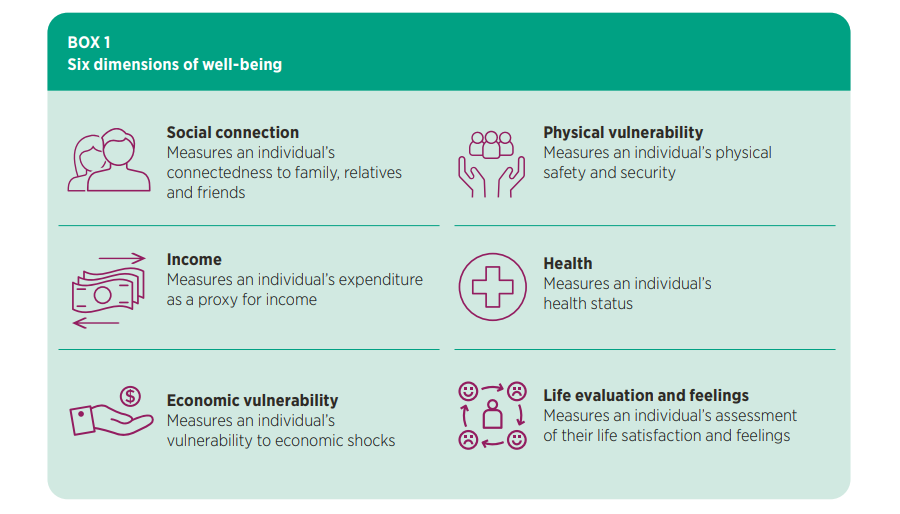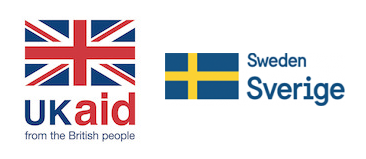More than half the world’s population is now using mobile internet, and studies have linked mobile broadband coverage with improved household income. Yet there is almost no research on how mobile internet use impacts the well-being of individual men and women in low- and middle-income countries. To fill this gap, GSMA Connected Women explored this connection, in partnership with the University of Pennsylvania, through a research study in Bangladesh and Ghana. What we found was intriguing and surprising and warrants further research.

We developed a well-being index with six dimensions (see Box 1), based on the OECD’s well-being framework, and then used nationally representative quantitative surveys to measure and compare the well-being of mobile internet users and non-users in Bangladesh and Ghana. Each dimension was measured using tried and tested living standards survey questions plus one self-assessment question. Taking a multi-dimensional view of well-being added substantial value over a single score based on self-assessed life satisfaction. Qualitative research was also conducted with mobile internet users to better understand what they use it for and why. The full findings are outlined in our recent report.
Four key findings:
- Mobile internet use is positively correlated with ‘overall well-being’ for many users. The index provided us with an ‘overall well-being’ score by combing the results across the six dimensions, some of which were positively correlated with mobile internet use and some with no correlation. After controlling for key demographic factors such as education, age and income, the positive correlation in Ghana between mobile internet use and overall well-being was no longer statistically significant. However, in Bangladesh, mobile internet users have three per cent higher overall well-being scores than non-users. These findings are robust for both men and women.
- Each well-being dimension reveals a different picture: mobile internet use is positively correlated with each of the six dimensions in Bangladesh, and three of the six in Ghana. Across the six well-being dimensions in both countries, mobile internet use was either positively correlated or had no statistically significant correlation, and no negative correlations were found. This indicates that mobile internet use is not associated with lower levels of well-bring against any of the dimensions we measured. In Ghana, mobile internet use is positively correlated with the dimensions of health, income and economic vulnerability. This highlights the importance of taking into consideration the socio-economic context in each country during analysis. Some potential reasons for the differences in results between the two countries are explored in the report.
- Mobile internet use has a stronger link with well-being for some groups more than others. The degree of correlation differed significantly by demographic group as well as by country, highlighting the importance of disaggregating findings firstly by gender, but also by other factors. For example, in Bangladesh, mobile internet users with at least a primary education had well-being scores five per cent higher than other groups, with little difference by gender. However, compared to all other groups, female mobile internet users in Bangladesh from low-income groups had six per cent higher levels of well-being, and those under the age of 40 or with two or fewer children, had four per cent higher levels of well-being.
- How people use mobile internet shapes the linkage with well-being in different ways. People use mobile internet to meet their life needs in different ways and face different constraints and social norms. When we analysed what people do online, we identified further insights. For example, women in Bangladesh who use mobile internet for video calls had overall well-being scores 15 per cent higher than non-users. In Ghana, use of mobile internet for education was positively correlated with well-being for a wide range of demographic groups. During the qualitative research, several participants mentioned how mobile internet helped them to stay connected and meet life needs during COVID-related lockdown measures.
“[With mobile internet] I learned how to improve my typing and writing skills.”
Ghana, urban female
“I can pay gas-electricity-water bills from home. This way of paying bills seems amazing to me, and I enjoy it.”
Bangladesh, urban female
“The most interesting side is that I never feel lonely, rather I feel that someone is always with me, I get this strength from using social media.”
Bangladesh, urban female
This multi-dimensional index could be applied by other organisations in other countries. Three key points to consider when applying this index elsewhere:
- Women are not a homogenous group: disaggregate by gender, but don’t stop there, include education, employment, family size, age and location etc.
- Take a multi-dimensional perspective: a single measure of well-being may mask important insights on how mobile internet can affect the different dimensions of people’s well-being.
- Qualitative data is crucial: it adds meaning and depth to the well-being dimensions and enabled us to understand the value of mobile internet for people’s lives.
Read the full report on Mobile Internet, Well-being and Gender: Understanding the Links.

The Connected Women programme is funded by the UK Foreign, Commonwealth & Development Office (FCDO) and the Swedish International Development Cooperation Agency (SIDA), and is supported by the GSMA and its members.


